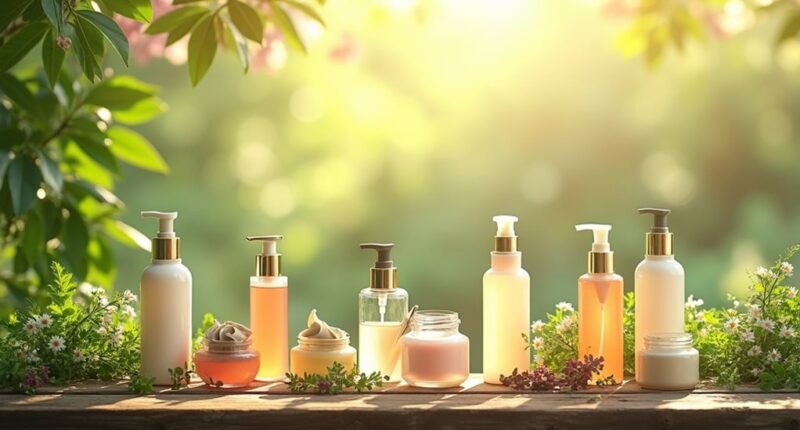Circular beauty has skyrocketed into a billion-dollar trend by embracing sustainability and innovation. This eco-conscious movement prioritizes reusing, repairing, and recycling, appealing to an increasingly aware consumer base. With increasing emphasis on minimal packaging and refillable systems, brands—both giant and emerging—are joining the bandwagon. Market growth forecasts eye a future where eco-friendly practices reign supreme. The pressing question remains: what other surprises are lurking in the world of circular beauty?
The Rise of Circular Beauty
In a world where beauty often feels synonymous with excess, the circular beauty trend emerges like a rejuvenating breeze on a hot summer day. This innovative approach flips the conventional beauty industry model on its head, trading a linear system—where resources are extracted, used, and discarded—for a sustainable cycle that emphasizes reusing, repairing, and recycling materials.
Picture it as a beauty buffet, where nothing goes to waste, and the environment gets a well-deserved hug.
The circular beauty market, a rising star, is projected to soar from $2.3 billion in 2021 to a whopping $4.2 billion by 2032, growing at a steady rate. It’s like watching a teenager grow—a little awkward at first but ultimately impressive. E-commerce has played a significant role in this growth, especially after the pandemic disrupted traditional retail. Consumers are increasingly leaning towards zero-waste and refillable products, as if they’ve collectively decided to give the planet a high-five. This shift is underscored by the fact that personal care products dominate the market with a 69.9% share. With a compound annual growth rate (CAGR) of 7.1% anticipated for the 2024-2025 period, the future looks bright for circular beauty.
Driving this trend is a growing awareness of environmental issues. The conversation has shifted; consumers want clean and natural beauty products that don’t come wrapped in a plastic nightmare. Enter refillable packaging systems, which align beautifully with minimalism and sustainable living. Savvy shoppers are increasingly relying on eco-labels to identify genuinely sustainable beauty products amid the sea of greenwashing.
It’s as if the world collectively decided that less is indeed more, and that includes less packaging clutter.
Innovations within the circular beauty space are as exciting as a new Netflix series. From waterless beauty products to bio-based materials, brands are stepping up their game. Even luxury players like Chanel are blending elegance with eco-consciousness, proving that you can be both chic and sustainable.
With leading players like L’Oréal and rising stars like UpCircle Beauty, the circular beauty trend isn’t just a fleeting fad; it’s here to stay. The world of beauty is evolving, and it’s all about embracing the cycle of life—one refillable bottle at a time.









